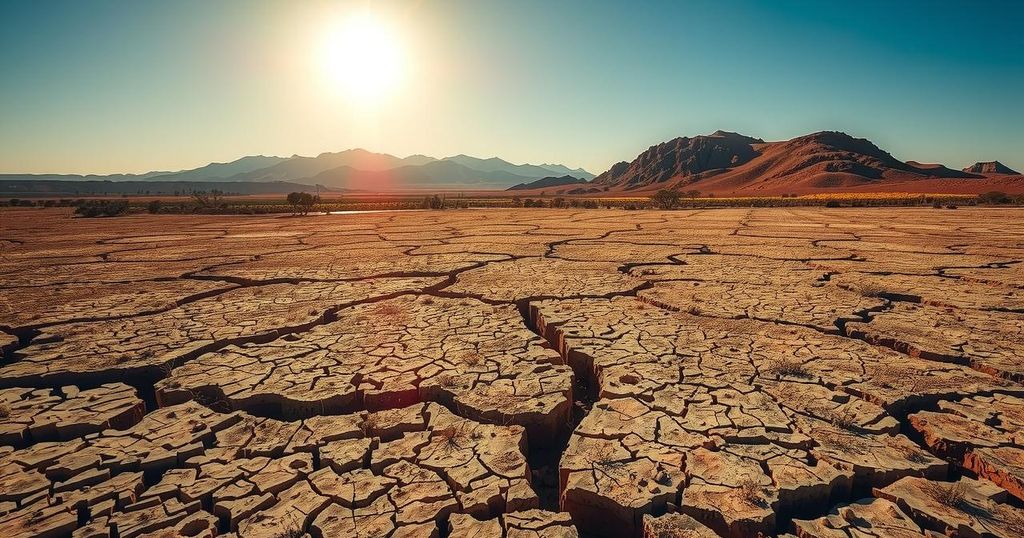Record Dryness: 2023 Marks the World’s Driest Year for Rivers in Three Decades
In 2023, the world experienced its driest year in three decades, according to the WMO, exacerbated by record-high temperatures leading to reduced river flows and prolonged droughts. The report indicates glaciers experienced their largest mass loss in fifty years and forecasts worsening water access challenges for billions of people globally. Enhanced data collection is crucial for managing these issues effectively.
According to a report by the United Nations World Meteorological Organization (WMO), 2023 marked the driest year for the world’s rivers in over thirty years. Record temperatures contributed to decreased water flows, leading to extended drought conditions in various regions. The WMO emphasized that glaciers, which serve as a critical water source for many nations, experienced the most significant loss of mass in the past fifty years, raising concerns about long-term water security for millions worldwide. Celeste Saulo, Secretary-General of the WMO, highlighted the precarious state of water resources, stating, “Water is the canary in the coalmine of climate change. We receive distress signals in the form of increasingly extreme rainfall, floods and droughts which wreak a heavy toll on lives, ecosystems and economies.” These rising temperatures have caused erratic changes in the hydrological cycle, resulting in both insufficient and excessive water supplies. The comprehensive “State of Global Water Resources 2023” report not only analyzes rivers but also evaluates lakes, reservoirs, groundwater, soil moisture, snow cover, glaciers, and evaporation rates. The WMO indicated that around 3.6 billion people currently lack adequate access to water for at least one month each year; this figure is projected to increase to 5 billion by 2050. Agriculture accounts for approximately 70% of water extracted from hydrological systems. With 2023 establishing itself as the hottest year on record, concerns are already emerging about 2024 potentially surpassing this heat. Stefan Uhlenbrook, WMO’s Director of Hydrology, water and cryosphere, stated, “In the (last) 33 years of data, we had never such a large area around the world which was under such dry conditions.” This year’s drought has severely impacted regions such as the southern United States, Central America, and parts of South America, resulting in unprecedented low water levels in the Amazon and Lake Titicaca. The Mississippi River basin also reported historically low water levels. While data for 2024 is still forthcoming, Uhlenbrook indicated that the intense heat experienced during the summer may likely result in continued low river flows this year. He predicted that many regions would see an increase in water scarcity. These low-water conditions have already disrupted river transportation in Brazil and contributed to food crises in Zimbabwe and surrounding areas. The report advocates for enhanced data collection and sharing to form a clearer picture of global water resources, assisting nations and communities in effectively responding to these alarming trends.
The current global climate crisis is closely intertwined with water availability, reflecting severe challenges posed by increased temperatures and altered hydrological cycles. The WMO’s reports reveal alarming trends regarding the resilience of water sources such as rivers and glaciers, highlighting how climate change impacts not only ecosystems but also human livelihoods and agricultural productivity. As drought occurrences rise, food security and navigation through vital waterways become pressing issues, necessitating immediate action and better data management.
The findings of the WMO signify a critical warning about global water resources. With 2023 being the driest year recorded for rivers in over thirty years, combined with the largest glacier mass loss in half a century, experts stress the urgency for global action to address water scarcity concerns. The aggravating effects of climate change on weather patterns underline the importance of robust data strategies to manage and respond to water-related challenges effectively.
Original Source: apnews.com




Post Comment